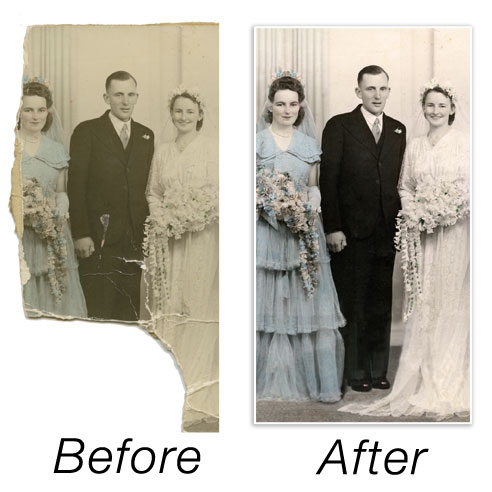The Megapixel Myth
When it comes to digital photography, many people have heard of the term ‘megapixels’. What you may not realise though, is how megapixels effect the size and print quality of a photo.
We’d like to show you just exactly how many megapixels are required to print a variety of photo sizes – and you may be surprised at the results!
Misconceptions
It is a common thought that ‘the higher the number of megapixels, the better the photo print quality’. In fact, the number of megapixels has very little to do with the quality of the photo.
For example, a photo from a 5 year old 5-megapixel camera could make a better quality image and print than a current, cheap 10-megapixel camera! Or a clear picture taken by a cheaper 4-megapixel camera could very well make a better print than an out of focus photo taken on an expensive 18-megapixel camera.
Let me explain some of the photographic terms you may have heard of.
The size of a photo is usually described in terms of ‘pixels’. Each pixel is a tiny dot of picture information, which when grouped together, produces the photo that you see.
You’ll often see the size or ‘resolution‘ of a photo described by the number of pixels horizontally times by the number of pixels vertically (for example 1600 x 1200).
A Megapixel (MP or Mpx) is, quite simply, 1 million pixels. The term megapixels most commonly relates to the total number of pixels an image has. In a similar way to calculating the area of a square, a megapixel is calculated by multiplying the horizontal number of pixels by the vertical number of pixels.
For example, an image of 1600 (horizontal) × 1200 (vertical) pixels equals 1,920,000 pixels, which is roughly 2 megapixels. This means a 2 MP camera will take a photo that typically has a resolution of 1600 x 1200.
Below is a table of Megapixels and their equivalent resolutions:
| Megapixels | Resolution |
|---|---|
| 2 MP | 1600 x 1200 |
| 3 MP | 2048 x 1536 |
| 4 MP | 2400 x 1600 |
| 6 MP | 3000 x 2000 |
| 8 MP | 3600 x 2400 |
| 12 MP + | 4200 x 2800 |
Now, when it comes to printing a clear, high quality photo, your image needs to have 300 pixels or dots per inch (DPI) – this 300 DPI is called the ‘print resolution‘. This means that 300 pixels of information will be crammed into 1 inch of printed photo, which will give a nice, sharp image. If you printed an image at only 150 DPI, it’s likely you’d notice the image looking blurry or pixelated.
Examples
To find out what size in inches your image can be printed out at while keeping the high quality, 300 DPI print resolution, simply divide the dimension of your image by 300. For example (using a 3 MP camera, which created a 2048 x 1533 pixel image):
2048 / 300 = 6.83″
1536 / 300 = 5.12″
Wow! This shows that a 3 megapixel camera is able to make a perfectly good and sharp image that can be printed out as a 6×4″ photo! This is surprising, given that a lot of people think they need a larger megapixel camera, even though most photo prints made these days are only 6×4″ size.
| Megapixels | Resolution | Common print size (at 300dpi) |
|---|---|---|
| 3 MP | 2048 x 1536 | 10x13cm / 4×6″ |
| 4 MP | 2400 x 1600 | 13x18cm / 5×7″ |
| 6 MP | 3000 x 2000 | 18x23cm / 6×8″ |
| 8 MP | 3600 x 2400 | 20x30cm / 7×10″ |
| 12 MP + | 4200 x 2800 | 30x40cm / 10×14″ |
Slide, Negative & Photo Scanning
(This is a topic we’ll just touch on, but leave for another day)
When scanning old slides, photos or negatives, it’s also important to know the size and resolution that you’re scanning at. We remember a handy formula when we are scanning slides or negatives for enlargements: the scanning resolution divided by the print resolution (remember you always want to print at 300 DPI) equals the size of enlargement.
For example: 2400 / 300 = 8 times larger
How many megapixels do you have?
Most cameras these days are at least 12 MP or more in size, and even smart phone cameras are 6 – 8 MP or more! How many megapixels does your camera, iPhone or iPad have?
This means that today’s cameras are very capable of making relatively large prints. It also means that the number of MP alone shouldn’t be the only factor you think about when buying a new camera. Other factors are much more important, such as the size and quality of the lens, auto-focussing systems, low light performance, video recording options, and battery life.
It’s handy to know the relationship between image resolution, megapixels, and print resolution when you come to print your photos out next time.
We hope you’ve found this useful. Thanks for reading!
Edwin










So what’s your take on nokia’s lumia1020? I haven’t really thought of printing my photos and when i read your post, i came to the realization that no matter how high your megapixel is, it’s no use when it comes to posting it online because it would automatically re-size your uploaded photo.
I’m not sure about the Nokia’s Lumia’s camera. But yes, you’re right, photos posted online should be re-sized to a smaller size and 72 DPI so they will load faster.